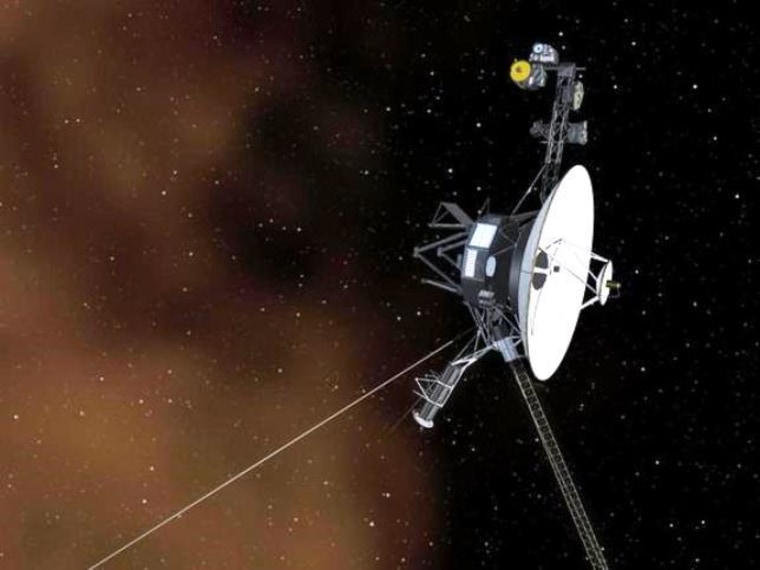New readings collected by NASA's Voyager 1 spacecraft have helped scientists confirm that the far-flung probe is indeed cruising through interstellar space.
Voyager 1 made headlines around the world last year when mission scientists announced that the probe had apparently left the heliosphere — the huge bubble of charged particles and magnetic fields surrounding the sun — in August 2012.
Sign up for Science news delivered to your inbox
They came to this conclusion after analyzing measurements Voyager 1 made in the wake of a powerful solar eruption known as a coronal mass ejection, or CME. The shock wave from this CME caused the particles around Voyager 1 to vibrate substantially. That gave mission scientists the opportunity to calculate the density of the probe's surroundings, because denser plasma oscillates faster. [Photo Timeline: Voyager 1's Trek to Interstellar Space]
This density was much higher than that observed in the outer layers of the heliosphere, allowing team members to conclude that Voyager 1 had entered a new cosmic realm, 35 years after its launch. (Interstellar space is emptier than areas near Earth, but the solar system thins out dramatically near the heliosphere's edge.)

The CME in question erupted in March 2012, and its shock wave reached Voyager 1 in April 2013. After these data came in, the team dug up another, much smaller CME-shock event from late 2012 that had initially gone unnoticed. By combining these separate measurements with knowledge of Voyager 1's cruising speed, the researchers were able to trace the probe's entry into interstellar space to August 2012.
And now mission scientists say they have confirmation, in the form of data from a third CME shock that Voyager 1 observed in March of this year.
"We're excited to analyze these new data," Don Gurnett of the University of Iowa, the principal investigator of Voyager 1's plasma wave instrument, said in a statement. "So far, we can say that it confirms we are in interstellar space."
— Mike Wall, Space.com
This is a condensed version of a report from Space.com. Read the full report. Follow Mike Wall on Twitter and Google+. Follow Space.com on Twitter, Facebook or Google+.